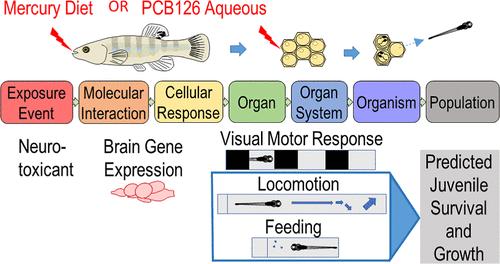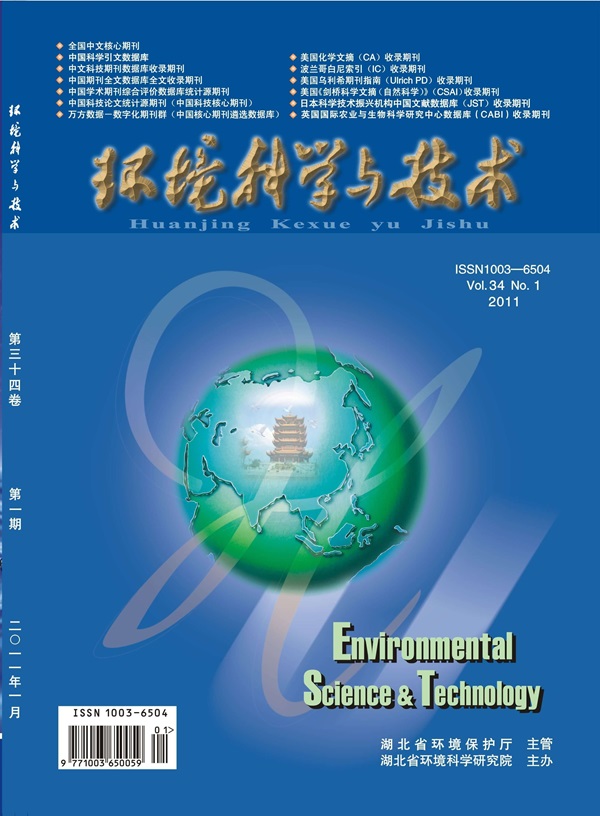Impacts on Atlantic Killifish from Neurotoxicants: Genes, Behavior, and Population-Relevant Outcomes
IF 10.8
1区 环境科学与生态学
Q1 ENGINEERING, ENVIRONMENTAL
引用次数: 0
Abstract
Molecular, cellular, and organismal alterations are important descriptors of toxic effects, but our ability to extrapolate and predict ecological risks is limited by the availability of studies that link measurable end points to adverse population relevant outcomes such as cohort survival and growth. In this study, we used laboratory gene expression and behavior data from two populations of Atlantic killifish Fundulus heteroclitus [one reference site (SCOKF) and one PCB-contaminated site (NBHKF)] to inform individual-based models simulating cohort growth and survival from embryonic exposures to environmentally relevant concentrations of neurotoxicants. Methylmercury exposed SCOKF exhibited brain gene expression changes in the si:ch211–186j3.6, si:dkey-21c1.4, scamp1, and klhl6 genes, which coincided with changes in feeding and swimming behaviors, but our models simulated no growth or survival effects of exposures. PCB126-exposed SCOKF had lower physical activity levels coinciding with a general upregulation in nucleic and cellular brain gene sets (BGS) and downregulation in signaling, nucleic, and cellular BGS. The NBHKF, known to be tolerant to PCBs, had altered swimming behaviors that coincided with 98% fewer altered BGS. Our models simulated PCB126 decreased growth in SCOKF and survival in SCOKF and NBHKF. Overall, our study provides a unique demonstration linking molecular and behavioral data to develop quantitative, testable predictions of ecological risk.

神经毒剂对大西洋鳉鱼的影响:基因、行为和种群相关结果
分子、细胞和生物体的变化是毒性效应的重要描述指标,但我们推断和预测生态风险的能力却受到了限制,因为我们无法获得将可测量的终点与不利的群体相关结果(如群落生存和生长)联系起来的研究结果。在本研究中,我们使用了来自两个大西洋异尖吻鲈种群(一个参考地点(SCOKF)和一个多氯联苯污染地点(NBHKF))的实验室基因表达和行为数据,为基于个体的模型模拟胚胎暴露于环境相关浓度的神经毒物后的群体生长和存活提供信息。暴露于甲基汞的 SCOKF 在 si:ch211-186j3.6、si:dkey-21c1.4、scamp1 和 klhl6 基因中表现出脑基因表达的变化,这与摄食和游泳行为的变化相吻合,但我们的模型模拟了暴露对生长和存活的影响。暴露于 PCB126 的 SCOKF 的体力活动水平较低,这与核和细胞脑基因组 (BGS) 的普遍上调以及信号、核和细胞 BGS 的下调相吻合。已知对多氯联苯有耐受性的 NBHKF 的游泳行为发生了改变,同时 BGS 的改变减少了 98%。我们的模型模拟了 PCB126 会降低 SCOKF 的生长以及 SCOKF 和 NBHKF 的存活率。总之,我们的研究提供了一个独特的示范,将分子和行为数据联系起来,对生态风险进行定量、可测试的预测。
本文章由计算机程序翻译,如有差异,请以英文原文为准。
求助全文
约1分钟内获得全文
求助全文
来源期刊

环境科学与技术
环境科学-工程:环境
CiteScore
17.50
自引率
9.60%
发文量
12359
审稿时长
2.8 months
期刊介绍:
Environmental Science & Technology (ES&T) is a co-sponsored academic and technical magazine by the Hubei Provincial Environmental Protection Bureau and the Hubei Provincial Academy of Environmental Sciences.
Environmental Science & Technology (ES&T) holds the status of Chinese core journals, scientific papers source journals of China, Chinese Science Citation Database source journals, and Chinese Academic Journal Comprehensive Evaluation Database source journals. This publication focuses on the academic field of environmental protection, featuring articles related to environmental protection and technical advancements.
文献相关原料
| 公司名称 | 产品信息 | 采购帮参考价格 |
|---|
 求助内容:
求助内容: 应助结果提醒方式:
应助结果提醒方式:


